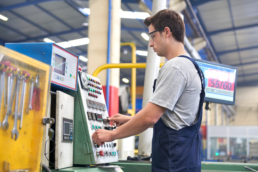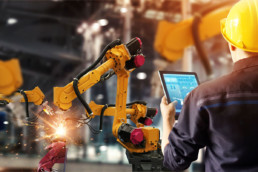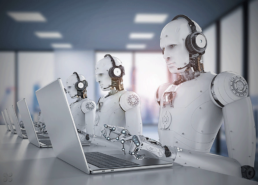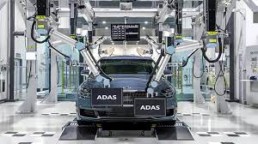Overcoming the Challenges in Traceability and using Smart Factory Solutions in Manufacturing
Traceability in manufacturing is the process of tracking the movement of raw materials, finished products, and other components throughout the entire production cycle. This enables manufacturers to identify and isolate any issues that may arise in the manufacturing process, which can help to minimize the risk of quality defects, recalls, and other problems. However, implementing traceability in manufacturing can be a significant challenge for many organizations.
Common Traceability Challenges
Batch Traceability
One of the primary challenges in implementing traceability in manufacturing is ensuring raw material traceability. Tracking the origin, quality, and movement of raw materials throughout the production process is critical for maintaining product quality and safety. However, many organizations struggle to achieve this due to the complexity of their supply chain, lack of visibility, or inadequate systems for tracking materials.
To overcome this challenge, organizations can adopt a range of strategies. For example, they can implement barcode or RFID tagging systems to track the movement of materials, implement supplier scorecards to ensure quality and traceability standards are met, or use blockchain technology to create an immutable record of material movement. ShopWorx solutions can provide detailed insights to show daily, weekly, monthly, and yearly data. It can show data for every single line and its subsequent stations to showcase all the metrics. Click here to explore ShopWorx Traceability solutions.
Component Traceability in Manufacturing
Another challenge in implementing traceability in manufacturing is ensuring material traceability within the production process. This involves tracking the movement of materials and components as they move through different stages of the manufacturing process, including production, assembly, and packaging. Ensuring material traceability is critical for identifying quality issues, preventing defects, and reducing waste.
To overcome this challenge, organizations can adopt various strategies. One effective approach is to implement shop floor management software that allows for real-time tracking of material movement and inventory levels. This software can also provide alerts for potential issues, such as low inventory levels or quality defects. Organizations can also provide shop floor management training to employees to ensure they understand the importance of material traceability and are equipped with the necessary skills to track and manage inventory effectively.
Shop Floor Inventory Management
Managing inventory on the shop floor is another significant challenge in implementing traceability in manufacturing. Effective inventory management is critical for maintaining product quality, meeting customer demands, and preventing waste. However, many organizations struggle to manage their inventory effectively due to a lack of visibility or inadequate systems for tracking inventory levels.
To overcome this challenge, organizations can adopt various strategies. One approach is to implement IoT in the manufacturing industry, such as sensors or RFID tags, to track inventory levels in real-time. This approach can provide more accurate inventory data and reduce the risk of stockouts or overstocking. Organizations can also adopt industry 4.0 technologies, such as machine learning or AI, to optimize inventory management and forecasting. ShopWorx can help design solutions with multiple modules and detailed insights on dispatch log, weight log, print vs scan log, shipment report etc.
Challenges in Implementing Industry 4.0 Technologies on your Shop Floor
Implementing traceability in manufacturing requires organizations to adopt industry 4.0 technologies. These technologies, such as IoT, machine learning, or blockchain, are critical for achieving real-time visibility, tracking, and analyzing data, and optimizing production processes. However, many organizations struggle to adopt these technologies due to a lack of resources, expertise, or resistance to change.
One prominent challenge is the varying size of materials, which makes it difficult to mark them consistently. Different materials come in various shapes, sizes, and forms. For example, in manufacturing industries, raw materials may come in different sizes or dimensions. In such cases, it can be challenging to apply standard labeling or marking techniques consistently across all materials. This can result in incomplete or inconsistent traceability information.
Another challenge is the mixing of materials or batches. In many industries, materials are often combined or mixed during the production process. This blending can occur in various ways, such as combining different chemical components in the pharmaceutical industry or blending different types of metal alloys in the manufacturing of automotive parts. When materials or batches are mixed, it becomes harder to trace the individual components or identify the specific origin of a particular batch or product. This can complicate traceability efforts, especially if strict record-keeping and tracking systems are not in place.
Also, Processes that destroy labels or markings pose another challenge. Certain manufacturing or treatment processes, such as painting or heat treatment, may require exposing materials or products to high temperatures, chemicals, or other substances.
Conclusion
In conclusion, Implementing a robust traceability system is crucial for industries that rely on tracking materials or products throughout their lifecycle. By improving marking techniques, ensuring consistent material movement, and implementing digital tools for scanning and logging, businesses can enhance their ability to trace and monitor materials effectively. Digitization not only streamlines operations but also enables real-time data collection, analysis, and reporting. With the right traceability solution, businesses can gain insights into their supply chains, identify bottlenecks, enhance quality control measures, and ensure regulatory compliance. ShopWorx stands out as a comprehensive solution provider, offering a user-friendly platform that integrates seamlessly into existing processes, helping businesses overcome traceability challenges and unlock the full potential of their operations.
Revolutionizing Industrial Manufacturing: The Impact of Operator Assistance Systems (OAS)
The Industrial Revolution of the 18th century brought about a major shift in the way goods were produced. The advent of machines powered by steam, electricity, and other forms of energy paved the way for mass production, which led to significant advancements in manufacturing. Today, with the emergence of advanced technologies, industrial manufacturing is undergoing yet another transformation. One of the most significant changes in recent times is the development of an Operator Assistance Systems (OAS), which is causing a minor upheaval in the way factories operate.
OAS are computer-based tools that assist human operators in carrying out manufacturing tasks. These systems use a combination of sensors, algorithms, and machine learning to provide operators with real-time information about the manufacturing process. The OAS can help operators detect faults in the system, predict equipment failure, and recommend corrective actions. In essence, OAS is designed to enhance the efficiency, productivity, and safety of industrial manufacturing processes.
OAS are typically connected with machines through sensors, actuators, and control systems that are integrated into the machine. These systems may be designed to collect and analyze data from various sensors, and use this information to provide real-time feedback to the operator, suggesting actions or providing warnings in response to changing conditions.
Functions of OAS
The functions of OAS vary depending on the specific application and the type of machine being used. Some common functions of these systems may include:
Monitoring machine performance: OAS can collect data from sensors that measure parameters such as temperature, pressure, and vibration to monitor the performance of the machine. This information can be used to detect potential problems before they become serious issues.
Alerting operators to potential problems: If a problem is detected, OAS can alert the operator by sounding an alarm or displaying a warning message. This can help prevent accidents and reduce downtime.
Optimizing machine performance: By analyzing data from sensors, OAS can make adjustments to the machine's settings in real-time to optimize performance. For example, they might adjust the speed of a motor to maintain a constant temperature or pressure.
Providing guidance to operators: OAS’s can provide guidance to operators by suggesting actions to take in response to changing conditions. For example, they might suggest a change in operating parameters to improve efficiency or prevent damage to the machine.
The use of OAS in industrial manufacturing has brought about several benefits. One of the most significant advantages is increased productivity. By automating routine tasks, OAS’s can reduce the time required to perform them. This means that operators can focus on more complex tasks that require human intervention. OAS’s can also monitor the performance of machines and equipment, detect bottlenecks, and provide real-time recommendations to optimize production processes. This can help increase production rates and reduce downtime.
How Operator Is Notified About Detects & Faults
Another benefit of OAS is improved quality control. By detecting faults in the manufacturing process early, OAS can help prevent defects in the final product. Operator assistance systems can detect faults in several ways, depending on the type of machine and the specific application. Here are some common methods:
Sensor-based fault detection: OAS can use sensors to monitor machine parameters, such as temperature, pressure, vibration, and noise levels. If these parameters deviate from their normal range or exceed a predefined threshold, the system can alert the operator that a fault has occurred or is likely to occur. For example, if a temperature sensor detects that a component is overheating, the system can alert the operator to shut down the machine before serious damage occurs.
Pattern fault recognition: OAS can use machine learning algorithms to analyze data from sensors and detect patterns that indicate a fault is developing. The system can then alert the operator to take action before the fault becomes critical. For example, an OAS in a manufacturing plant might detect a pattern of vibration that indicates a bearing is starting to fail.
Diagnostic fault testing: Some OAS can perform diagnostic tests on the machine to detect faults. These tests might include checking the resistance of electrical components or analyzing the quality of lubricants. If the test results indicate a fault, the system can alert the operator.
Trend analysis for fault: OAS can also use historical data to detect faults. By analyzing trends in machine performance over time, the system can identify changes that may indicate a fault is developing. For example, if the machine's energy consumption is increasing over time, it may indicate that a component is wearing out.
How to Improve Operator Efficiency with OAS
The implementation of OAS is not without its challenges. One of the main challenges is the change management activity for operators to adapt with these systems. Many operators view OAS as a tool for micromanaging their daily operations and hence their resistance to change and adapt to use OAS. The primary solution for this is to incentivize operators to use this system by providing them with bonuses based on their performance. An Operator loyalty program can be introduced which can cover training, change management and operator performance tracking which allows all of the operators to earn extra incentives by adapting to the new system and making the change management process much easier.
The Impact of OAS
The development of OAS is a major step forward in the digital transformation of industrial manufacturing. By integrating advanced technologies, such as machine learning and artificial intelligence, OAS can provide operators with real-time insights into the manufacturing process. This can help improve efficiency, productivity, and safety, and enable factories to produce high-quality products at a lower cost. The use of OAS is expected to increase significantly in the coming years, as more factories recognize the benefits of these systems.
OAS are revolutionizing industrial manufacturing by providing operators with real-time insights into the manufacturing process thus helping improve efficiency, productivity.
ShopWorx provides an OAS that delivers a range of benefits to operators, including relevant information that is necessary for them to do their jobs more effectively. The system also provides real-time trends and predictions that enable operators to take action before a problem occurs, and to make decisions that optimize production. In addition, the ShopWorx system includes data entry capabilities that streamline QA checklists, JH checklists, and diagrams, as well as SOPs. By using the ShopWorx system, manufacturing companies can track real time parameters that include, downtime, productivity, and enhance the quality of their products. The system provides operators with the tools they need to succeed, while also empowering management to make more informed decisions about production. Ultimately, the benefits of the ShopWorx system are clear: it delivers enhanced efficiency, improved quality, and better outcomes for both operators and manufacturers.
Importance of Sustainable Manufacturing in the EV Industry
“How manufacturers are adopting sustainable practices to reduce their environmental impact and support the growth of the electric vehicle industry”
The rise of electric vehicles (EVs) has brought about a significant change in the automotive industry, with an increasing number of manufacturers shifting towards sustainable practices. Sustainable manufacturing in the EV industry is crucial for reducing environmental impact, reducing carbon emissions, and promoting the growth of the EV industry. So how are manufacturers adopting sustainable practices to support the growth of the EV industry?
How EVs are Reducing Environmental Impact:
Producing Lower emissions during production: EVs require less energy to manufacture than traditional gasoline-powered cars. They also produce fewer emissions during the manufacturing process, largely due to the reduced number of parts required for an electric drivetrain. This reduces the carbon footprint of EV production.
Using Renewable energy: EV manufacturers are increasingly relying on renewable energy sources, such as wind or solar power, to power their factories. This means that the energy used in the manufacturing process is largely carbon-free, further reducing the carbon footprint of EV production.
Using Less Materials: EVs require fewer materials than traditional vehicles, particularly when it comes to the powertrain. This means that the manufacturing process has a smaller impact on the environment, as fewer resources are required to produce the vehicle.
Recycling Batteries: The batteries used in EVs are recyclable, which means that valuable metals such as lithium, cobalt, and nickel can be recovered and reused. This reduces the need for new materials to be mined, lowering the carbon footprint of the manufacturing process.
Innovations in EV Industry: The EV industry is driving innovation in sustainable manufacturing processes and materials. This is leading to the development of new, more efficient manufacturing techniques and materials with a lower environmental impact. These practices not only reduce the environmental impact of manufacturing but also create a more sustainable supply chain for EVs.
Supporting the Growth of the EV Industry:
Sustainable manufacturing practices not only reduce the environmental impact of the manufacturing process but also help support the growth of the EV industry. The adoption of sustainable practices creates a more efficient and cost-effective supply chain, reducing production costs for manufacturers. This, in turn, helps reduce the overall cost of electric vehicles, making them more affordable and accessible to consumers. Sustainable manufacturing practices can also create new job opportunities and stimulate economic growth in the EV industry.
Innovations in Battery Technology
The future of battery technology in EV manufacturing is exciting, with the potential for significant advancements in the years to come. One area of research is the use of artificial intelligence to improve battery performance and efficiency. AI/ML algorithms can be used to optimize battery charge and discharge cycles, extend battery life, and reduce the risk of battery failure. Another area of innovation is the use of wireless charging technology. Wireless charging eliminates the need for physical connections between the vehicle and the charging station, making charging more convenient and efficient. This technology could revolutionize the EV industry by making charging as simple as parking the vehicle over a charging pad.
Battery technology is a critical component of EV manufacturing, and advancements in this area are shaping the future of the industry. Lithium-ion batteries have been a significant advancement in battery technology for electric vehicles, and ongoing research is focused on developing even more efficient and reliable batterie
Examples of Sustainable Manufacturing in the EV Industry:
Several manufacturers have already adopted sustainable manufacturing practices in the production of electric vehicles. For instance, Tesla has installed solar panels in their factories to generate renewable energy and reduce their carbon footprint. BMW has incorporated the use of recycled materials, such as recycled plastics and carbon fibre, in the production of their electric vehicles. Other companies, such as General Motors, have also set targets to reduce their carbon emissions and transition towards sustainable manufacturing practices.
It can have a positive impact on the environment by reducing the environmental footprint associated with traditional manufacturing processes. Some specific examples of sustainable impacts during EV manufacturing are reduced greenhouse gas emissions, use of sustainable materials, energy-efficient manufacturing processes, responsible disposal of hazardous materials and waste reduction. EV manufacturing practices can help to reduce the environmental impact of vehicle production, and contribute to a cleaner, more sustainable transportation system.
Summary:
The importance of sustainable manufacturing in the EV industry cannot be overstated. By adopting sustainable practices, manufacturers can reduce their environmental impact, reduce carbon emissions, and support the growth of the EV industry. Sustainable manufacturing practices can create a more efficient and cost-effective supply chain, reduce production costs, and create new job opportunities. As the popularity of electric vehicles continues to grow, sustainable manufacturing practices will become increasingly important to ensure that the industry is sustainable, cost-effective, and environmentally friendly.
End Customers and Internal Customers: The Two Gateways to Automation Success
Over the years we at Bajaj Allianz General Insurance have undertaken some intense backend and front-end automation initiatives. Combining these with cognitive and other technologies such as IoT has helped us create some of the most disruptive use cases.
For instance, using drones and satellite imaging for assessing crop damage, the app for farmers in vernacular language, IoT and geofencing based devices for capturing driving behavior, vehicle diagnostics and security alerts, connected school with non-intrusive chip in the child’s id card for relaying regular updates to parents.
In all these cases, being able to deliver value-added services along with the core insurance cover has helped us in taking the whole customer experience level up a notch and gain a competitive edge.
The use cases can be many – ranging from very simple to highly complex – and limited only by one’s imagination. Whatever the use case, there are some common underlying principles that are fundamental to the success of your automation agenda.
I’m often asked these questions – how do you ensure your project’s success and optimize automation’s impact? The answer to these ultimately boils down to two key principles I have distilled from my own experiences and learnings through the automation journey we have undertaken at Bajaj Allianz General Insurance. These principles are universal and relevant across all industry verticals and not insurance alone.
Principle #1: Start with your end customer in mind
While this looks like a very simple age-old tenet that’s quite obvious, even today I hear a lot of conversations caught up in buzz words. Sometimes it is the most obvious that misses the mark. The mindset – ‘Everyone is doing it, we need to be there, and we need to be seen’ – is not going to work. Because when the rubber hits the road, if the deployment is not based on a strong foundation it will end up becoming the white elephant.
It is important how you blend the science of technology with the art of customer centricity. At the end of the day no matter what you automate, how you automate or how much you automate, you shouldn’t forget whom you are doing it for.
Based on that do internal scrutiny of your landscape. Look at your current systems and processes, re-engineer them keeping the customer in mind and then deploy the right technology stack.
Somewhere down the line, you will be posed with the question around integrating cognitive and other digital technology flavours to your automation initiatives – when is the right time to add AI/ML capabilities? Here again, the yardstick has to be the customer. Ask yourself whether the use case for adding cognitive and other capabilities to automation is customer-led or are you just getting swayed by the technology’s glamour or peer pressure. Technology for the sake of technology begets zero value.
Principle #2: Do the heavy lifting upfront
When it comes to your internal customers, you do not keep the heavy lifting for the end. Working in a corporate, you will rarely find complete consensus with everybody fully on board and bought in on the project. You will come across a set of people who approve the project, some who couldn’t care less and those who may be opposed to it for various reasons. The biggest mistake you can make here is to keep the tough conversations till the last. Many times, we tend to avoid getting into these tough conversations and work in a private mode with some of their favourably placed stakeholders, develop the automation project and then just a few days before launch spring a surprise on the other stakeholders. As a result, we typically end up finding many people opposed to it and the project ultimately does not see the light of the day in the right manner.
With all the heavy lifting done right up-front, it becomes a smooth journey, and then by the time you are ready to launch it everybody is on board. When it moves from inside the firm to outside, it’s the complete consensus and teamwork that go on to make the project successful beyond the Proof of Concept (PoC).
The many paths to automation success, ultimately, need to be led by an unwavering focus on your end customers as well as your internal customers (employees and other stakeholders).
IT companies set to slash 3 mn jobs by 2022 due to automation, to save $100 bn in cost: Report
With automation taking place at a much faster pace across industries especially in the tech space, domestic software firms that employee over 16 million are set to slash headcounts by a massive 3 million by 2022, which will help them save a whopping USD 100 billion mostly in salaries annually, says a report.
The domestic IT sector employs around 16 million, of them around 9 million are employed in low-skilled services and BPO roles, according to Nasscom.
Of these 9 million low-skilled services and BPO roles, 30 per cent or around 3 million will be lost by 2022, principally driven by the impact of robot process automation or RPA. Roughly 0.7 million roles are expected to be replaced by RPA alone and the rest due to other technological upgrades and upskilling by the domestic IT players, while it the RPA will have the worst impact in the US with a loss of almost 1 million jobs, according to a Bank of America report on Wednesday.
The report goes onto warn that emerging economies mostly India and China face the most risk of technology driven disruptions which can impact up 85 per cent of jobs in countries like Kenya and Bangladesh.
India saw its manufacturing peak in 2002, while it occurred in Germany in 1970, in Mexico in 1990.
India among least prepared for automation in Asia Pacific, says Autodesk survey
India ranks fifth highest in terms of the impact from automation and ninth in terms of level preparedness, according to a recent research study conducted by Deloitte and commissioned by Autodesk Foundation.
The country faces a greater likelihood of being impacted by automation due to larger employment shares in agriculture, manufacturing and construction -- all identified as high-risk industries by the report titled 'The Future of Work is Now: Is APAC Ready?'It explores the state of automation and future of work across 12 Asia Pacific countries including Australia, Bangladesh, India, Indonesia, Japan, South Korea, Myanmar, Pakistan, the Philippines, Singapore, Thailand and Vietnam
The report aims to help identify the labour markets most vulnerable to technological disruption in A-Pac and propose solutions to help workforces thrive as automation becomes a reality.The research finds India, Bangladesh and Pakistan are most at risk and least prepared for the coming wave of automation.
Covid-19 has greatly accelerated the adoption of automation across the world. According to the report, close to half of all businesses intend to increase their adoption of robotic process automation over the next year."Automation creates opportunities for new, more meaningful types of work as it replaces mundane or repetitive manual tasks. But the state of preparedness of countries and industries will determine whether they benefit from these advances," said Rajeev Mittal, Regional Director for India and SAARC at Autodesk."Improving digital literacy, supporting disadvantaged workers, and putting in place the right infrastructure and skills will help create new roles that workers can transition into," he said.A-Pac is a diverse region and the challenges facing individual countries when it comes to automation are vastly different.However, the report points to one common conclusion regardless of geography: automation will create opportunity if the right support mechanisms are put in place and the focus is put squarely on helping workers to succeed.
Creating a Successful Smart Manufacturing Environment for Small and Medium-sized Manufacturers
Digital transformation of manufacturing processes and procedures is a daunting project for even the largest and most sophisticated of manufacturing organizations. It is not surprising, therefore, that the challenges inherent in a digital transformation process may seem insurmountable to small and medium-sized manufacturers (SMMs), who typically lack the financial and human resources of larger organizations.
Indeed, as has been noted in an earlier SME blog post, it is easy to believe “that if you do not already have a digital transformation plan, then it is already too late.” However, SMMs are typically more nimble than their larger counterparts; they can turn a lack of existing processes into an advantage, since processes can be put into place without the need to accommodate or replace existing processes. In order to gain the full benefit of this advantage, it is important to work with partners knowledgeable about the challenges presented when transforming a manufacturing environment. Some of these challenges include training and retaining skilled workers, protecting connected infrastructure from malicious attack, and securing proprietary information.
Smart manufacturing requires skilled workers to fill critical positions. As the current manufacturing workforce ages, and retires, employers must recruit new, often younger, employees to fill those positions. However, generational shifts in attitude have resulted in a mismatch between what many younger workers want from employment and what they perceive manufacturers offer. Often, recruiting younger workers is an exercise in convincing those workers that manufacturing is “cool” and meaningful. Additionally, manufacturing employers must often overcome the concern, held by many younger workers after witnessing nearly two decades of offshoring, that no long-term career path exists in the manufacturing sector despite the significant increase in manufacturing employment seen during the last decade. Moreover, smart manufacturing processes, by their very nature, change quickly, requiring employers to be dedicated to continued learning for the workforce. All of these factors have led to a skills gap in the manufacturing industry.
In order to attract and retain the talent necessary to succeed in a smart manufacturing environment, all employers will need to provide a work environment that encourages employee innovation, offers a long-term career path, recognizes intangible contributions and provides opportunities for continued training and education. We have worked with numerous organizations on these issues and have collected some of our thinking in this article. SMMs have the advantage that their culture is less hard to change than larger organizations and can more quickly adopt personnel policies enabling the recruitment and retention of the future workforce.
A digital manufacturing effort will often require communication with systems and entities in the “outside world.” Each of these communication channels provides an entry point for a malicious party. Further, Internet-of-Things-enabled equipment provides an additional entry point that must be secured from malicious attack. This is not just an issue of securing against intellectual property theft. Increasingly, physical infrastructure and its operation is the target of malicious actors, whether through ransomware attacks or other means. The importance of this consideration cannot be underestimated. As of November 30, 2020, certain U.S. Department of Defense (“DoD”) prime contractors and subcontractors will need to complete a cybersecurity self-assessment prior to receiving new DoD contracts and prior to the exercise of new options under existing DoD contracts. Additionally, DoD contractors will need to ensure that any subcontractors that receive Controlled Unclassified Information (“CUI”) have also completed the cybersecurity self-assessment.
For small or medium-sized manufacturers who are DoD prime contractors and subcontractors, the requirements incumbent on them may be clear and unambiguous. For those manufacturers who are not, the question of how much security is enough security can be difficult since there is no “one size fits all” answer. Nor is it possible to achieve 100% security. Small and medium-sized manufacturers can benefit from working with a trusted advisor who has helped implement security protocols at companies spanning the gamut of sizes and sophistication levels. Such an advisor can help a small or medium-sized manufacturer make smart choices to balance security and cost to achieve an optimal outcome. An example of some of those considerations can be found here.
A third consideration is securing proprietary information through the filing of patent applications and trade secret protection. Many of the considerations just discussed with respect to securing the physical plant of a manufacturing site will apply to trade secret protection. However, capturing innovation in a smart manufacturing environment, which nearly always includes software and increasingly includes machine learning and artificial intelligence techniques, requires a skill set that existing patent counsel may not possess. Smart manufacturing patent applications, if not properly drafted, may be considered by the United States Patent and Trademark Office (USPTO) to be ineligible for patent protection – a consideration that most manufacturing patents never have to face.
For evidence of the complexity of this issue, one need look no further than the fact that the USPTO has been issuing guidance as to the subject matter eligibility of these kinds of patent applications for nearly seven years. The most recent guidance from the USPTO was issued August 2020. As with the issues discussed above, while larger manufacturers may have resources to “throw at the problem,” SMMs will benefit from counsel that is already fluent in navigating these issues. Foley has followed this issue closely from inception and has several practitioners who deal with these issues on a daily basis, providing strategic advice regarding the patent eligibility of a wide range of technologies.
Creating a successful smart manufacturing environment may seem like insurmountable obstacle to small and medium-sized manufacturers. However, with experienced guidance, small and medium-sized manufacturers can use their organizational agility to leapfrog other, slower organizations in creating the manufacturing firm of the future.
Yes, Industry 5.0 is Already on the Horizon
We are still in the midst of Industry 4.0, where manufacturing has taken on the label of “smart” through the integration of the IoT, AI, cyber-physical systems, and Cloud and cognitive computing. The basic principle behind the fourth industrial revolution is that by chaining machines, intelligent devices, and systems, manufacturers are creating smart networks throughout the value chain (from materials to production) that can control each other.
With that being said, it’s amazing that technological advancements continue to grow at an incredible speed—so much so that Industry 5.0 can already be seen on the horizon, which according to some tech visionaries, will bring an increased human touch back to manufacturing. Therefore, where Industry 4.0 put smart technology at the forefront of manufacturing, 5.0 will be increased collaboration between humans and smart systems. Marrying the two will merge the high-speed accuracy of industrial automation with the cognitive, critical thinking skills of humans.
According to Universal Robots Chief Technology Officer Esben H. Østergaard, Industry 5.0 is necessary due to consumers high-demand of individualization in the products they buy, meaning they prefer a degree of “hands-on” personalization and customization with their products. To back up his statement, Esben cites an article from Bloomberg detailing auto manufacturer Mercedes’ decision to give more space to humans in the production factories, noting that customization is an important factor with modern consumers.
More and more manufacturers are increasing the human component not only for the customization, but also for increased efficiency on the production line. One example is Toronto’s Paradigm Electronics, which manufactures high-end loudspeakers. The company uses Universal Robots’ UR10 robotic arm to polish the speaker cabs to a high-luster sheen, but it takes considerable time to do so. By adding a human counterpart, however, it increased its production efficiency by 50%.
This isn’t to say robots will eventually be phased out of the production cycle. On the contrary: Industry 5.0 will enhance both machine and human roles in the manufacturing industry, leaving the monotonous, repetitive tasks to the mechanical and opening up the creative side to the biological. This will allow staff to take on more responsibility and increased supervision of systems to elevate the quality of production across the board.
The idea of collaboration between humans and robots on the assembly line is not a vision of the distant future. In fact, consulting firm Accenture recently released an outlook from a survey they conducted with 512 manufacturing execs from all over the globe, revealing that 85% of them envision a collaborative production line between humans and robots in their plants by 2020. It’s quite the impressive outlook, considering that target date is just three years away.
That projection may be alarming to some manufacturers who have only begun to adopt Industry 4.0 standards, but it doesn’t need to be. Human/robot collaboration is already taking place on the production line, as mentioned earlier. It’s a natural evolution that will take place within the smart manufacturing industry, and robotics producers have already developed collaborative robots that are safe to use around human workers to prevent injuries in the workplace.
Although Industry 4.0 is still the foremost revolution on most manufacturers’ minds, it’s also important to keep an eye on the future. Technology is constantly advancing, and production must evolve with it to remain competitive. With the increase in demand for quality hands-on custom-made products, manufacturers will undoubtedly benefit from what Industry 5.0 has to offer, and perhaps it will reduce the inherent fear most production workers have concerning being replaced by automation. New skills are necessary, but the collaborative workplace will be beneficial for all in the long term. All we need to do is keep an open mind.
Industry is being “versioned” way too willy-nilly. We need versioning control! Without a better way of describing innovation in industry, we are doomed to see more “upgrading” of industry, since it is an attention-grabber. So, let me now coin the term “Industry 6.0,” where we never interface with any machine, person, or drafting table/setup. Instead, it’s all done in an app. We take a picture of a rough sketch and click “make it.”
Global Governments Continue to Invest in Manufacturing Tech
United Kingdom (UK)
Boosting competitiveness through digital technology, the UK government will be awarding £53mn in funding via its national Made Smarter programme to propel the latest breakthroughs in digital manufacturing and support the adoption for all organisations.
As part of the governments latest commitments, five new research centres, a digital supply chain innovation hub, and 37 individual projects will benefit from the funding, which will support manufacturers across the UK to digitalise and transform manufacturing supply chains, as well as increasing productivity and boosting competitiveness.
“As we embark on a digital manufacturing revolution, we want to make sure our manufacturers are bolstered by the latest cutting-edge technology as we all work to build back better from the pandemic,” said Lord Grimstone, Minister for Investment.
“Improving productivity and becoming more competitive is not just about sophisticated manufacturing, but also about smarter manufacturing, and we want to make it as easy as possible for companies large and small to make the changes needed to take full advantage of the innovative technology being developed.”
Czech Republic
With ambitions to attract a gigafactory for electric car batteries in the country, the Czech Ministry of Industry and Trade has signed an agreement with its leading power company CEZ.
Prepared to give direct and indirect state support, the Czech government is committed to supporting the plans with at least 52bn Cezch Koruna (US$2.4bn) to help land the factory that will have up to 55 GWh per year.
CEZ is in advanced talks with automotive manufacturer, Volkswagen, and multinational conglomerate, LG over their interest to become major partners in the Czech battery manufacturing consortium.
United States (US)
Advocating for government investments and clean energy to strengthen the US manufacturing industry, President Joe Biden has made increasing manufacturing jobs a priority.
With a US$973bn infrastructure package, the administration plans to invest US$52bn in computer chip production, clean energy, and the use of government procurement contracts to create factory jobs.
“This is all part of his effort to lift up and talk about his Buy American agenda as well as the infrastructure package,” said Jen Psaki, Press Secretary.
“I am engaging almost daily with industry. We need to incentivize the manufacturing of chips in America. And so, we are very focused on putting the pieces in place so that can happen,” said Gina Raimondo, Commerce Secretary.
Japan
Committed to strengthening the country’s supply chain networks by supporting essential products, parts, and materials, and minimising the risk of COVID-19 supply chain disruption. The Japanese government has selected Vestas for its Ministry of Economy, Trade and Industry (METI) subsidy program - the Program for Promoting Investment in Japan to Strengthen Supply Chains.
To enhance the existing wind energy supply chain, Vestas has established plans to develop a manufacturing assembly facility in Japan as part of the program. The facility will provide a module and assembly for offshore wind turbine nacelles, and leverage advanced manufacturing technology in Japan.
"Vestas is proud to be selected for this program and we are committed to partnering with the Japanese government, customers and local industry to develop a sustainable offshore wind industry," said Purvin Patel, President and CEO of Vestas Asia Pacific.
"Leveraging this program, we believe that our company's plans will enhance the country's supply chain, create green jobs, and contribute to Japan's net zero ambitions by 2050.
Adaptability is the key to survival, says Hyundai
In the process of finding the best solution for a given problem we often forget that the problem itself might change. Similarly, when we want to build a smart factory, no matter how good the current solutions maybe, we need to be farsighted and plan accordingly. Built to last is the adopted mantra but built to adapt is the way to go, said Ganesh Mani S, Director- Manufacturing, Hyundai Motor India at the ET Auto Smart Factory virtual summit on Friday.
Giving an example of the ‘Build to Adapt’ Choluteca Bridge in Honduras, he called the COVID situation an ‘infection to inflection’ point. “The point of inflection gives pain. However, in the long term it offers huge advantages,” he explained.
“At present, the assembly automation ratio is less than 10 percent. Going forward, investments in Industry 4.0 should be viewed as a risk to mitigation technique rather than an ad hoc investment. Irrespective of the size and scale of operations, this will play an important role, especially considering the mixed production of ICE and EV in future,” Mani said.
Smart employees make smart factory
According to Mani, data is the oil, but it is useful only with the right resources (employees) to refine it. Smart leadership and remote communication capabilities are equally necessary.
“At Hyundai, we have on the shop floor a set of over 50 data scientists who understand machines and data programming,” he said.
As per the Hyundai Director, technology-enabled decision-making is the key. “In the post-COVID-era, data will be the new basis of competitive advantage. A digitally connected shop floor can generate 11.7 billion data points a year. So keep updated or become outdated,” he said.
Safeguard, Rebuild and Redesign
Talking about Hyundai’s journey of maneuvering the pandemic, Mani said 'Safeguard' was in the month of April with complete lockdown and zero sales. “We resorted to constant communication with the customers, employees, vendors, dealer partners, and all the people who stood strong to take care of the assets (machinery) and resources in the plant,” he said.
'Rebuilding' and restarting comes with uncertainty but requires preparation and quick execution. “We have already reached over 90 percent volumes of what we were doing in the pre-COVID period,” he added.
'Redesign' strategy started with zero-touch manufacturing as a concept and calibrated the use of technology by moving from social distancing to smart distancing, Mani said.
Further giving an example of pit stop timings in F1 racing over the last decades, he explained how automation technologies could help increase the operating speed by two times in smart manufacturing.
Lastly, talking about managing deliveries of its latest model amid the COVID scare, Mani said, “Hyundai Creta was launched in March, and we got a large number of bookings. So we started working at the backend. Generally, on an assembly line, the change is only four to five times a month. However, since the lockdown got eased, we were able to change it as high as 17 times in a short period. Even though this required systematic changes from the vendor and dealer end, we managed to do this because of highly flexible lines in the manufacturing setup.”










